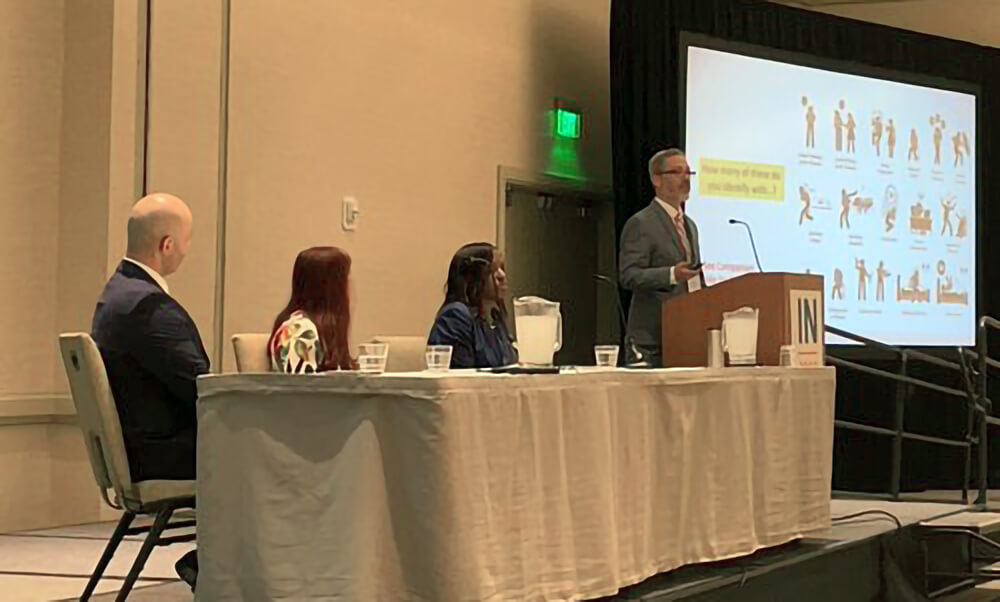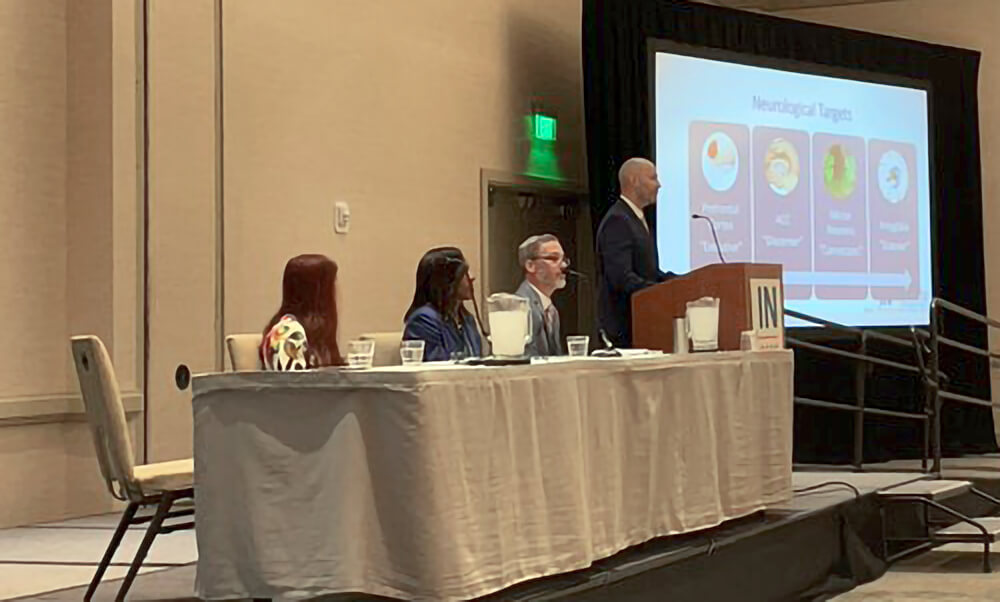An AACP Interim meeting panel explored how academic institutions can address workplace trauma.
By Emily Jacobs
Many leaders and employees are seeing symptoms of workplace trauma in the wake of the COVID-19 pandemic. These include fatigue, absenteeism, disengagement, sleep difficulties, feelings of guilt or shame, avoidance of certain activities and feeling a loss of control. These symptoms may not always be clinically diagnosed as trauma, but they can still affect employee functioning, reduce productivity and increase turnover and costs.
Academic institutions have not been immune to these symptoms of trauma. Disrupted operations, interrupted career paths, isolation and fears of illness have created feelings of uncertainty, detachment and anxiety. Many academic leaders may feel unprepared to address these issues in their workplaces.
AACP’s INvigorate 2022 meeting, held in February in San Diego, included a session titled “Organizational Strategies for Recognizing Trauma in Academia and Elevating Workplace Resilience.” Two of the panelists, Dr. Jeremy Hughes, associate dean for academic affairs at Chicago State University College of Pharmacy, and Dr. David Fuentes, associate dean for academic affairs at the University of Portland School of Nursing, explained that the session aimed to help academic workplace leaders and team members learn to identify trauma and address it appropriately.
Academic environments come with unique challenges that can create trauma. For example, academic expectations, such as contributing to (re)accreditation or publishing a paper, can take months or even years to complete. Over time, these looming expectations can contribute to feelings of anxiety, uncertainty and a loss of control. Many academic faculty and staff do not have a single, direct supervisor who conducts a performance evaluation. Promotions and tenure are often determined by committee, including people outside the organization. Staff and faculty may feel forced to play “office politics” in an effort to further their careers, creating stress that can lead to some symptoms of trauma.
Career advancement often comes with impostor syndrome—a feeling of being unqualified for a role. This is especially common for individuals taking on a new academic position. New pharmacy residents, fellows or professors may feel pressured to become instant experts in their field, even when they still have a lot to learn. They may feel inadequate, even believing that they cannot fulfill their academic role without sacrificing other aspects of their lives. This can create problems with boundaries and work-life balance.
How to Approach Disruptive Behavior
The panelists outlined the best approaches that supervisors can use to address trauma-based behavior. For example, a faculty member who has experienced trauma may feel out of control. He or she may try to compensate by becoming more controlling in the classroom. This can create resentment, tensions and other disruptions. How should a supervisor address such behavior?
When a supervisor notices a problem behavior, Hughes and Fuentes suggest gathering more information about it while finding the best moment to interact with the employee. The supervisor should consider possible causes of the behavior. The supervisor can then meet with the employee to ask about the behavior, invite conversation and listen. Next, the supervisor should consider how to provide compassionate support. Finally, the supervisor lets the employee decide the next steps, giving him or her an opportunity to change and meet expectations. This may include a decision to seek out professional assistance, including therapy to address the trauma symptoms.
“Giving them kind of a safe space to talk it through and maybe ask them some questions…to help them reach some of that awareness on their own [can help employees who feel out of control],” said Hughes. The session explored helpful attitudes to adopt when responding to trauma-based behavior. One is a “Growth” mindset, which looks at setbacks as opportunities to learn and improve. Supervisors also should adopt a “Coaching” mindset, which listens to the individual and asks questions, rather than a “Superior” mindset that gives orders.
The right mindsets also help individuals struggling with impostor syndrome. “When folks are trying to chase the expert mindset and mentality, it's almost like, ‘When do I get there? When do I arrive?’” Fuentes noted. “But the reality is that the healthiest way to do it is by thinking about ‘becoming’ and the journey and not really thinking about when the end goal is met.”


Preventing Trauma in the Academic Workplace
Academic leaders should also understand how to prevent trauma-based behavior in the first place. Helpful resources and policies can reduce stress and encourage a healthier work environment. Transparent policies, with clear expectations for employee behavior, are a crucial tool. Institutions should set specific procedures for achieving promotion and tenure, receiving awards and being appointed to committees. This can make career paths less political, less stressful and more concrete.
Partnerships with other departments, such as the university’s human resources office, can help support supervisors and employees. Departments can work together to establish employee assistance programs for individuals struggling with trauma. As employees and students resume on-campus activities after COVID-19, there may be fears of further disruptions. They may have generalized anxiety and fears of reliving the experience and may attempt to avoid it by exerting excessive control. Understanding what an individual can and cannot control is the first step in building resilience.
“What's our locus of control, what are the things that we're actually able to influence?” Hughes said. “One of the things [to deal with that anxiety] is just kind of being aware of the difference between our circle of influence and our circle of concern, and recognizing what can we not change, even though we're anxious about it?”

